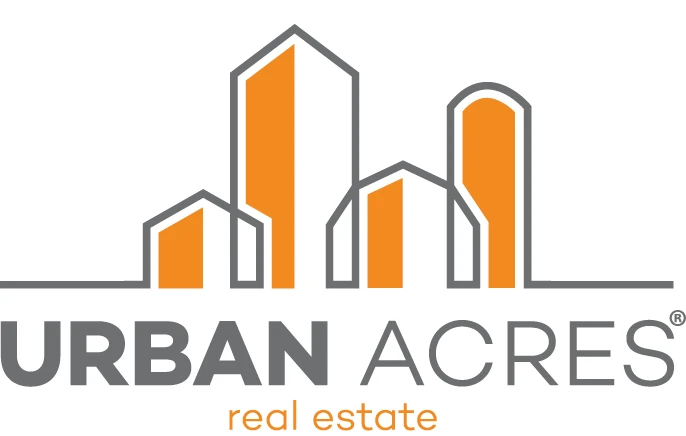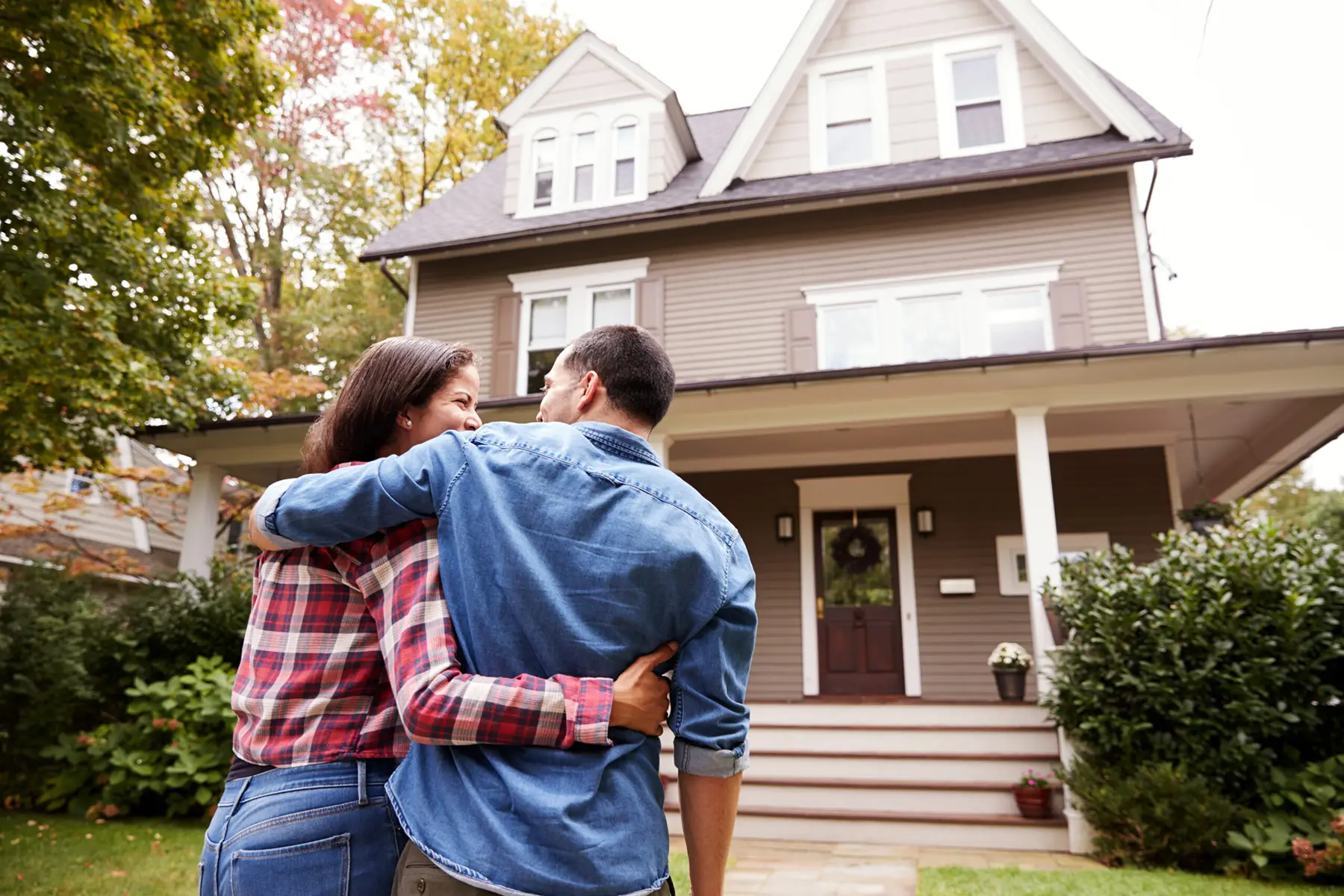For many of us, what makes a house a home is who we share it with—including our pets. When searching for a new home, it’s important to consider not only your wants and needs, but the needs of your furry friends, too.
If you’re a pet parent, here are a few things to keep in mind during your home search to help you find a place that’s perfect for both you and your fur kids. Don’t forget to tell your REALTOR® about your pets when you begin your buying journey, and let them know about any pet-friendly features you want to prioritize in your search!
Why It’s Important
Sixty-seven percent of American households own at least one kind of pet, which amounts to almost 85 million households nationwide. In Iowa, 59.4% of people own some type of pet. The pandemic has only fueled these numbers, with 11.4 million U.S. households adding a new pet to their family since the lockdown.
So pet ownership is becoming more common, but what does that have to do with real estate? A lot, actually. As pet ownership rises, so does the demand for homes with pet-friendly features. According to the National Association of REALTORS®, 43% of pet owners would be willing to move to better accommodate their pets.
Millennials are leading the pack in pet ownership, representing 32% of all pet owners in the United States. They’re also the generation driving the real estate market, making up the biggest share (37%) of homebuyers. In other words, those most likely to be on the hunt for a home are also the most likely to own pets, meaning pet-friendly homes are in higher demand than ever before.
What to Look For
Here are a few pet-friendly features to add to your wishlist during your home search.
Fenced-In Backyard
This one is a biggie, especially if you have a dog. Forty-nine percent of homebuyers with pets listed a fenced-in backyard as their number one priority in their home search, and for a good reason. Fenced-in yards allow your pets to have outdoor time without the need for a leash or supervision, but fencing in your own yard can be pricey. According to HomeGuide, the average cost of fencing in a yard can range from $1,500 to $3,000, with most homeowners spending around $1,800. While prices depend heavily on the length, height, and material of your fence, it saves a headache—and money—if your new home already has a fence installed.
If you don’t like the look of traditional fences, invisible fences may be the way to go. These fences are placed below ground and connected to a collar, which emits a warning sound or another type of similar cue to tell your pet not to pass the boundary. Through a combination of these warning cues and training, your dog will be able to roam your yard freely—no supervision, leash, or eye-sore fence required.
Like an above-ground fence, the cost of an invisible fence depends on the size of your property and the length of wire needed. The average cost is about $1,200. Though less common than traditional fences, it’s still worth keeping an eye out for in your home search.
Durable Flooring
Between claws, fur, and the occasional accident, your floors undergo a lot of wear and tear from your pets. For obvious reasons, carpet is not the ideal flooring choice if you share your home with four-legged or furry friends. It tends to harbor pet stains and odors and is one of the most difficult flooring types to clean.
Luxury vinyl plank (LVP) flooring is usually considered the holy grail of pet-friendly flooring. Durable and cost-effective, this flooring is scratch- and water-resistant, so it can withstand water bowl spills, accidents, or even skidding paws. Even better? It’s easy to clean and comes in many styles, so it can mimic the look of real wood or stone.
Tile is another popular pet-friendly flooring choice. Whether it’s porcelain, ceramic, or stone, tile is durable, easy to clean, and offers a nice cold place for your pets to stretch out on warmer days. Keep an eye out for LVP or tile flooring during your home showings.
Trails and Sidewalks
It’s important not only to consider features of a potential home, but also the surrounding neighborhood. Are there nearby trails? How easy are they to access? Do they allow pets? How much sidewalk space does your area have? Are the sidewalks well-maintained? Especially if you own a dog (or a very leash-tolerant cat), a walkable neighborhood—or access to a nature area, such as F.W. Kent Park, Hickory Hill, Terry Trueblood, and so on—is a huge plus.
Not sure what the best place in the neighborhood is to walk your dog? Ask your Urban Acres agent; we know the area forward and backwards, and often from the perspective of someone who’s holding the leash!
Adequate Square Footage
It’s important to find a home that’s the right size for you and your family, including your pet. After a fenced yard, a ‘large enough home for household and pet’ is the most commonly sought-after factor for pet-owning buyers.
Be sure to look at homes that have adequate space for the size of your animal. For example, a Great Dane probably wouldn’t be very comfortable in a 600-square-foot condo, though a cat could make do. Keep in mind that a small home may not be a deal breaker if you have a large animal, but you may have to put in more effort—for example, more time outside and on walks—to make sure they can stretch out, get their daily exercise in, and burn off some energy.
Stairs
If you have an elderly pet, stairs could pose an obstacle. However, you don’t have to limit your search to ranch homes only. A home with stairs can be modified to fit your elderly pets’ needs, though it may mean confining your pet’s living space—including their bed and feeding area—to one story of the home if needed. On the exterior of the home, a ramp can be installed to help your pet navigate front or back porch stairs.
Proximity to Veterinarians
If you’ve found a home you like and are seriously considering putting in an offer, be sure to check for the nearest veterinarian. The Corridor is home to more than a dozen veterinary clinics, so finding a place nearby to care for your pet’s health needs shouldn’t be too difficult.
Proximity to Dog Parks and Doggy Daycares
Dog parks are another great pet amenity to search for near a potential future home, especially if your dog needs more room to roam and play than your backyard will offer. The Iowa City-Cedar Rapids area currently has seven dog parks:
- Thornberry Off-Leash Dog Park – Iowa City
- Rita’s Ranch Dog Park – Iowa City
- Cheyenne Off-Leash Dog Park – Cedar Rapids
- K-9 Acres Off-Leash Area – Cedar Rapids
- Dave Wright Family Dog Park – Hiawatha
- Red Fern Dog Park – North Liberty
- City Dog Park – Tiffin
If you work at home or your dog just needs to socialize with other dogs for the day, there are also several popular doggy daycares in the area:
- Lucky Pawz – North Liberty
- Bounding Hound – Coralville
- Just Dogs PlayCare – Coralville
- Diersen’s Canine Country Club – Solon
Proximity to Other Pet Services
We take our pets pretty seriously in the Corridor! Countless locally owned businesses are dedicated to your pets’ health, well-being, and entertainment: Woofables Bakery, Kaitlyn’s Pupcakes, Leash on Life, Muddy Puppy Pet Market, the self service pet wash at the Amoco on Dodge Street in Iowa City, and the soon-to-come W.A.L.K. Canine Community, to name a few. Did we mention the dozens of dog walking, pet sitting, grooming, boarding, and pet training services?
Need a recommendation on the best vet, nearest dog park, or a fabulous pet sitter? Ask your Urban Acres agent. Many of us have pets ourselves and can point you in the direction of our local go-tos!
Pet Laws and Fees
Each city, neighborhood, and HOA often have their own pet laws and associated fees. If you’re heavily considering a particular home, research these rules and fees at the city, neighborhood, and HOA level so that you are not caught off guard by unexpected regulations or expenses when you move in.
Pet-Friendly Home Trends That are on the Rise
Beyond the above basics, there are many bonus pet-friendly features that are increasingly being included in homes, especially in remodeled or new construction homes.
Catios
Think of it as a screened-in porch for your feline friend! Many house cats love to explore the outdoors just as much as dogs, but oftentimes their low tolerance for harnesses and leashes can make outdoor adventures difficult. Catios allow cats to get fresh air and satisfy their natural outdoor instincts while still in a safe, enclosed environment.
These catios are often an extension of the home, much like a porch or sunroom. Catios range from small window boxes to large enclosures resembling a human-sized screened-in porch that both cats and people can enjoy. They often have built-in shelves for cats to climb and sunbathe up high—very similar to a cat tower.
Doggie Showers
Tired of hefting your pet into the tub for bathtime? Doggie showers are exactly what they sound like, and they’re becoming increasingly common. Picture a human shower, scaled down to fit your four-legged friend. These tubs are often tiled and contain a detachable shower head to make giving your pup a bath easier. They’re usually located in entryways and mudrooms, which is ideal for rinsing muddy paws when your dog comes in from outside.
Feeding Stations
Pet owners have come up with all kinds of stylish ways to incorporate—and sometimes hide—pet necessities in their homes. For example, feeding stations, which are often built into kitchen islands or cabinets using a low, recessed shelf and built-in bowls.
Feeding stations are also becoming more common in mudrooms. They often take the shape of makeshift benches, with bowls set in the top and pull-out drawers beneath where food can be stored.
Lowkey Litter Boxes
Cat owners have gotten creative with ways to hide litter boxes from view—and we’re not just talking about shoving them into a low-traffic corner of the house. Many litter boxes these days are cleverly disguised as furniture, with a cutout on the side for cats to enter and do their business. Planters, end tables, storage cabinets, vanities, wardrobes—you name it, someone has turned it into a fashionable litter box.
Pet Nooks
Another modern pet owner trend: carving out a space in the home that your pet can call their own. Built-in beds, built-in kennels, and pet nooks—often located in the odd space under the stairs—are all ways homeowners are dedicating more space exclusively to their pets.
To Wrap Up
The real estate market is going to the dogs—literally—as more homebuyers prioritize pet-friendly features in their home search.
Already found the home of your dreams? See our moving guide blog for tips on how to make the move less stressful for your pet.
Still searching or planning to move soon? We’re big animal people, and many of our agents are pet parents themselves. Let us help you find the perfect home for you and your four-legged friends—your fur-ever home!
And if your pet has scales, feathers, or other unique needs, let us know what would make your pet’s life especially sweet and we can help you find it in a house. Reach out today!





